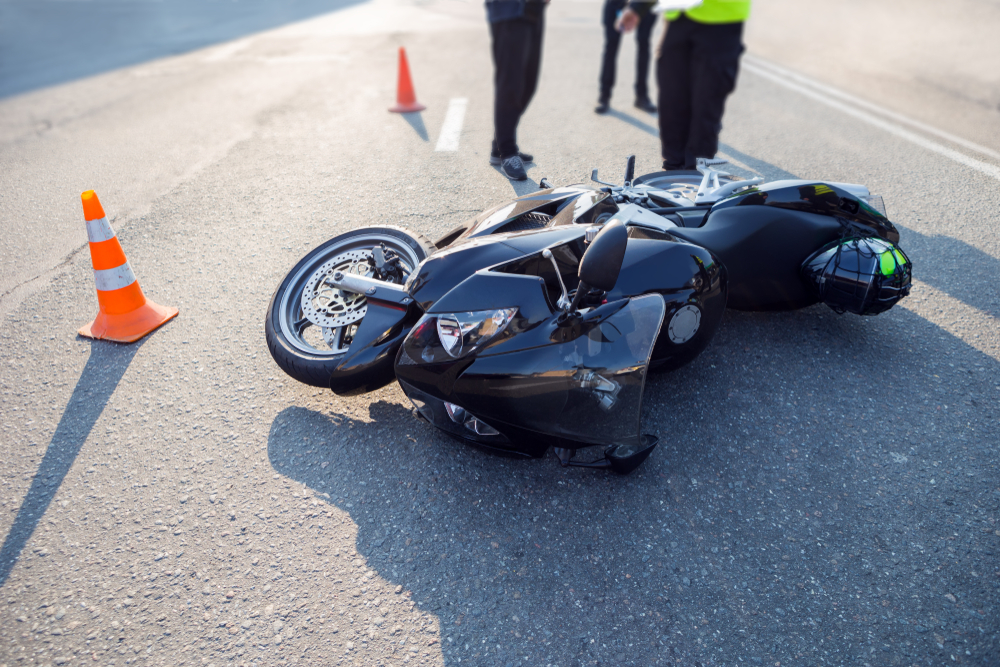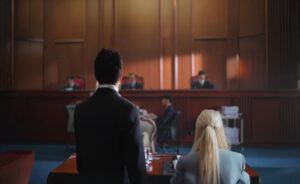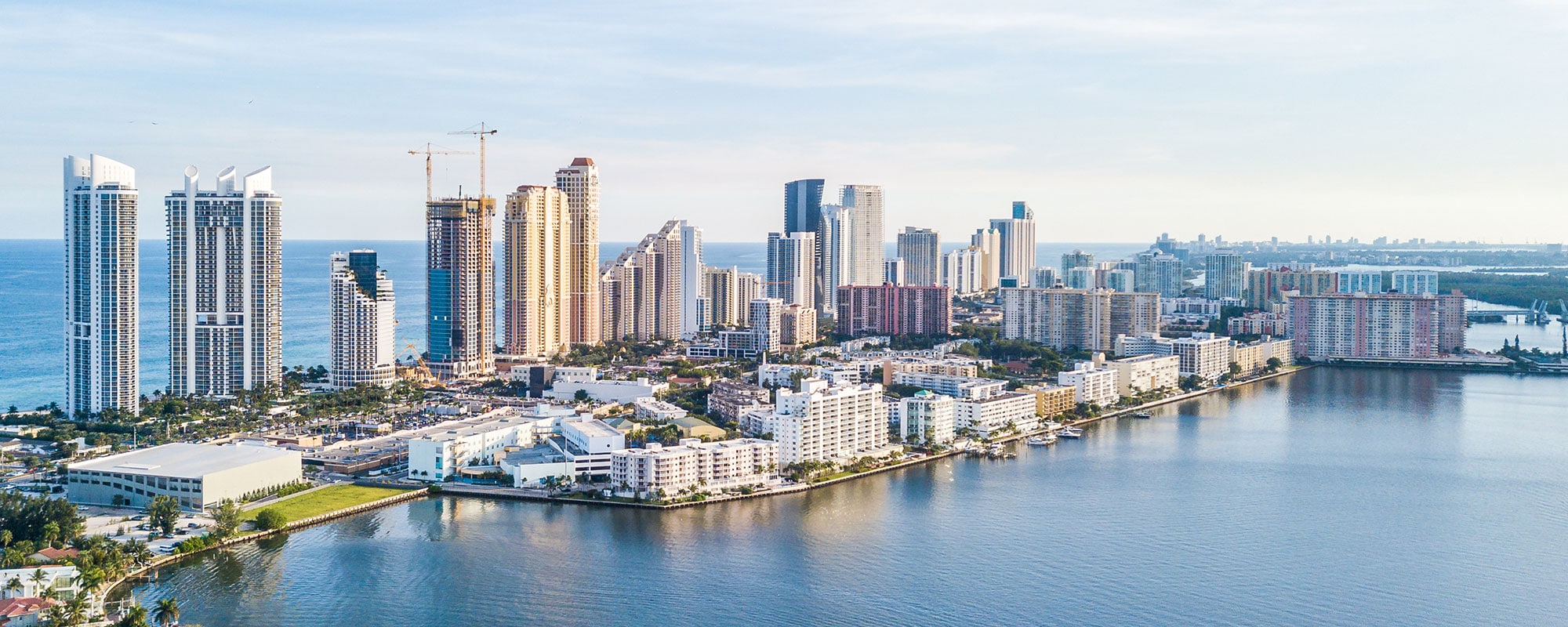How Long Does a Motorcycle Accident Lawsuit Take?
Gregg Hollander | August 16, 2024 | Motorcycle Accidents

Wondering how long a motorcycle accident lawsuit takes is natural. Unfortunately, there isn’t one if you’re looking for a quick answer. A motorcycle accident lawsuit can vary in duration depending on the case’s complexity. Factors such as the severity of injuries, the extent of property damage, and the presence of multiple parties involved can significantly impact the timeline. In addition, every jurisdiction has different legal procedures, which can also influence how long a motorcycle accident lawsuit takes.
If you’ve suffered an injury in a motorcycle accident that wasn’t your fault, please speak to an attorney as soon as you can. A Boca Raton motorcycle accident lawyer will get all the facts and then let you know how long it will likely take to receive the compensation you deserve.
Factors That Affect the Duration of a Motorcycle Accident Lawsuit
Pursuing a motorcycle accident lawsuit can be a complex and time-consuming process. Understanding the timeline of a lawsuit can help you manage your expectations and make informed decisions throughout the legal journey.
The following is a look at the various factors that can affect the duration of a motorcycle accident lawsuit.
The Case’s Complexity
If your case involves multiple parties, such as other drivers, manufacturers, or government entities, it can increase the complexity and lengthen the timeline. Disputes over liability or the extent of damages may require additional investigation and expert testimony, which can further prolong the process.
The Accident Investigation
Your motorcycle accident lawyer will conduct a thorough investigation to determine the cause of the accident and gather evidence to support your claim. This investigation process can take some time, especially if there are challenges in obtaining crucial evidence, such as surveillance footage or witness statements. The quality and depth of the investigation can have a major impact on the strength of your case.
Medical Treatment and Recovery
The duration of your medical treatment and recovery can also affect the timeline of your motorcycle accident lawsuit. You should focus on your health and recovery first before pursuing legal action. Working closely with your healthcare providers and following their recommended treatment plan will benefit your health and strengthen your legal claim.
Settlement Negotiations
Settlement negotiations with insurance companies or other parties involved in the accident can also extend the duration of a motorcycle accident lawsuit. Negotiating a fair settlement may require multiple rounds of communication and back-and-forth discussions. If the parties can’t reach a satisfactory settlement agreement, it may be necessary to proceed to trial, which can significantly prolong the overall timeline of the lawsuit.
Initial Steps after a Motorcycle Accident

After a motorcycle accident, you must take several essential steps to protect your rights, build a strong case, and potentially shorten the time it takes to obtain compensation. These steps include:
Following Your Doctor’s Treatment Plan
Once you’ve received medical help, don’t stray from your doctor’s treatment plan. Insurance companies know when accident victims do this. When they do, an insurer can damage the victim’s case by claiming they’re not as badly hurt as they claim. In many instances, this tactic works. Accident victims lose significant compensation as a result.
Contacting Your Insurer
Notify your insurance company about the accident as soon as possible. Provide them with accurate and detailed information about the incident. However, avoid making any recorded statements or accepting a personal injury settlement offer without seeking legal advice.
Hiring a Motorcycle Accident Lawyer
If you’re suffering from severe pain, you might not want to deal with the effort it takes to find a skilled motorcycle accident lawyer. However, getting legal help will be critical to obtaining fair compensation from the at-fault party. Please hire an attorney as soon as possible so they can gather the proof needed to win your case.
Filing a Lawsuit
The statute of limitations and complaint are key aspects of a motorcycle accident lawsuit. Here’s some brief information on each.
The Statute of limitations
Before filing a motorcycle accident lawsuit, you need to know the statute of limitations in your jurisdiction. The statute of limitations sets a time limit for filing the lawsuit. Missing this deadline can result in the court dismissing your case. Consult with a motorcycle accident attorney to ensure you file your lawsuit within the required timeframe.
Drafting, Filing, and Serving the Complaint
The complaint is a legal document that outlines your claims and provides the basis for your lawsuit. Your motorcycle accident attorney will draft and file the complaint with the court. After filing the complaint, serving the defendant with the lawsuit is necessary. This involves delivering a copy of the complaint and other legal papers to the defendant, ensuring they’re aware of the lawsuit and have an opportunity to respond.
The Discovery Process

Once your lawyer files the motorcycle accident lawsuit, the discovery process begins. This process allows both parties to gather evidence, exchange information, and build their cases. The discovery process includes:
Interrogatories and Document Requests
Interrogatories are written questions each lawyer sends to the opposition, requiring written answers under oath. Document requests involve asking for specific documents or evidence relevant to the case. Responding to these requests and gathering the requested information can take time.
Depositions
Depositions are oral testimonies given under oath outside of the courtroom. Both parties can depose the opposing party, witnesses, and experts. A court reporter records the depositions, which both sides can use as evidence during the trial.
Expert Witness Testimony
In complex motorcycle accident cases, attorneys may call on expert witnesses to provide specialized knowledge and opinions. Expert witness testimony can be critical in establishing fault and the extent of damages.
Reviewing and Responding to Discovery Requests
Both parties must review and respond to discovery requests promptly. This process can be time-consuming as it involves analyzing the requested information and preparing appropriate responses.
Pre-Trial Settlement Negotiations
Settlement negotiations may be possible before proceeding to trial. These negotiations can occur at any point during the lawsuit process, including during the discovery phase. Parties may engage in mediation or alternative dispute resolution methods to reach a mutually agreeable settlement. It’s essential to carefully evaluate any settlement offers and consider the potential costs and benefits of accepting an offer versus proceeding to trial.
The Trial
When the two sides can’t agree to a settlement, the case proceeds to trial. The trial process involves several structured steps, each critical to ensuring a fair and thorough examination of the facts and arguments. Here’s some information to prepare you for what to expect should your motorcycle accident lawsuit go to trial.
Jury Selection

Many states allow the parties in a lawsuit to choose between a trial decided by a judge or jury. If the latter applies to your case, the court will choose a jury to hear the case and render a verdict. The plaintiff’s and defendant’s lawyers can question potential jurors through a process called voir dire. This process aims to identify any biases or preconceived notions that might affect a juror’s impartiality.
Each side can challenge potential jurors and request their dismissal for cause or use a limited number of peremptory challenges to dismiss jurors without stating a reason. The goal is to assemble a fair and impartial jury to ensure an unbiased case evaluation.
Opening Statements
During this phase, both parties give the jury an overview of their case. The plaintiff’s attorney typically goes first, outlining the key facts and arguments they intend to present. The defendant’s opening statement comes next, providing their perspective on the case and highlighting the counterarguments they will make. Opening statements aren’t evidence. They give the jury a roadmap of what to expect during the trial.
Presentation of Evidence
The core of the trial process is presentation of evidence. Both parties present their evidence to support their claims or defenses. This evidence can include witness testimony, documents, photographs, videos, and physical objects relevant to the case. The plaintiff goes first, then the defendant. Each side can challenge the other party’s evidence through objections and cross-examination. The judge rules on these objections to ensure that the court only considers admissible evidence.
Witness Examination and Cross-Examination
Witnesses provide their account of the events in question. The party that calls the witness conducts the direct examination, asking questions to obtain relevant facts and information. After the direct examination, the opposing party has the opportunity to cross-examine the witness.
Cross-examination aims to challenge the credibility of the witness and test the reliability of their testimony. This process can reveal inconsistencies and weaknesses in the opposing party’s case. Redirect and recross examinations may follow to clarify points raised during cross-examination.
Closing Arguments
Once the attorneys present all evidence and examine witnesses, both parties make their closing arguments in the motorcycle accident lawsuit trial. These final statements summarize the critical points of the case, highlight the evidence supporting their arguments, and address the weaknesses in the opposing party’s case. The plaintiff’s attorney typically goes first, followed by the defendant’s attorney, with the plaintiff having the option for a brief rebuttal.
Jury Deliberation and Verdict
Once each side makes their closing arguments, the judge instructs the jury on the relevant laws and legal standards that apply to the case. The jury then retires to deliberate in private, considering the evidence and arguments presented during the trial. They return to the courtroom to deliver their verdict once they reach a unanimous decision or a required majority.
Post-Trial Possibilities
After the trial concludes, several post-trial possibilities can arise, depending on the outcome and the actions of the involved parties. Some of those possibility include the following:
Appeals Process
If you’re dissatisfied with the trial’s outcome, you may consider appealing the decision. The appeals process involves a higher court reviewing the trial proceedings to identify any legal errors that may have impacted the verdict. Appeals aren’t opportunities to present new evidence but rather to argue that the trial court made mistakes in applying the law or procedural errors.
Your motorcycle accident lawyer will evaluate the viability of an appeal. They can help determine sufficient grounds for an appeal and guide you through the necessary steps. The appeals process can be lengthy and complex, requiring a thorough understanding of legal principles and meticulous preparation of legal documents.
Enforcing the Judgment
If your motorcycle accident lawsuit succeeds, the next step is enforcing the judgment. Obtaining a favorable judgment doesn’t automatically mean you’ll receive the awarded compensation. Your motorcycle accident attorney may need to take active steps to collect the judgment from the defendant.
This process can involve various collection efforts, such as garnishing income, placing liens on property, or seizing assets. Enforcement can be challenging, especially if the defendant is unwilling or unable to pay. Working with a motorcycle accident lawyer can help you through the enforcement process and utilize the most effective methods to secure your compensation. They can assist in locating the defendant’s assets and pursuing legal actions to satisfy the judgment.
Post-Trial Motions for Relief
After the trial, either party may challenge the verdict by filing post-trial motions for relief. These motions can request a new trial or challenge certain proceedings. Attorneys can file several motions, such as motions to demand a new trial, change the judgment, and for judgment notwithstanding the verdict (JNOV).
Your motorcycle accident lawyer may file a motion for a new trial if there were significant procedural errors, newly discovered evidence, or other factors that could have affected the trial’s fairness. A motion to amend or alter the judgment seeks to change the trial court’s judgment based on specific legal grounds. A JNOV motion argues that no reasonable jury could have reached the given verdict based on the evidence presented. An attorney can help you determine if filing post-trial motions is appropriate in your case.
Let a Skilled Attorney Help With Your Motorcycle Accident Lawsuit

If a negligent party caused the motorcycle accident leading to your injury, contact an experienced lawyer to understand your legal options and receive the compensation you deserve. A skilled personal injury attorney in Boca Raton can guide you through the legal process and protect your rights.

